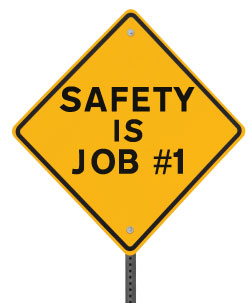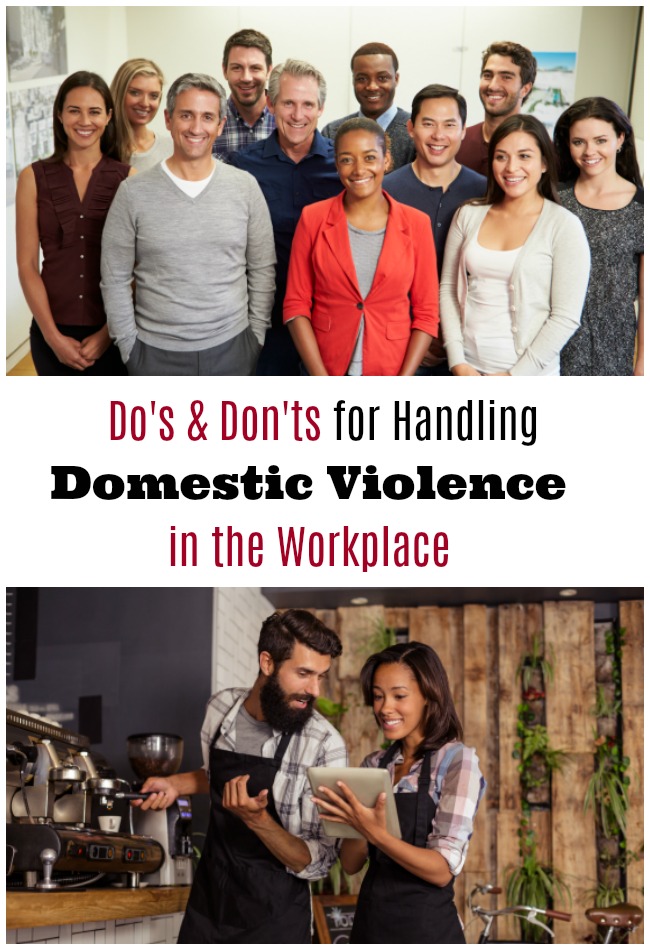Employer Tips for Dealing with Domestic Violence
Domestic violence doesn’t just stay inside the walls of the home or the personal relationship. When a worker experiences abuse in a relationship, this abuse almost always spills over into her workplace, in one form or another. In fact, domestic violence is the fastest growing type of workplace violence in Canada. The consequences of domestic violence can extend into the workplace in various forms, including harassing phone calls or emails, physical visits, stalking, threats, or physical violence. Statistics Canada shows that almost 20 percent of all incidents of violent victimization, occurred while the survivor was at work (2004). This is why it is so important for every workplace to have domestic violence policies and safety plans in place.

When it comes to protecting workers and workers from domestic violence, there are simple measures every employer and organization should be taking.
When employers are proactive and put precautions into place, it creates a safer and more supportive environment for everyone. It is always important to be prepared for the potential that incidents involving domestic could occur.
This list of do’s and don’t’s for domestic violence are meant to help protect the worker who is being abused as well as her co-workers. Remember: domestic violence doesn’t discriminate . From hospitals to restaurants to factories to hair salons , every workplace should be ensuring they’re doing their best to protect their workers. Take a moment to read through these employer tips for dealing with domestic violence, so that you can make sure you’re on the right path to creating a safe and healthy workplace .
Do's
- Educate yourself and workers on the warning signs of domestic violence , so that everyone can be prepared to recognize these signs and take steps to offer support.
- Have all workers take part in regular training about domestic violence . This should happen with all levels of workers, including management. Having all workers take part in training sessions can make all the difference.
- Provide more comprehensive training sessions for managers, supervisors, security personnel, HR managers, and union representatives, if you have a unionized workplace. Remember that the more authority someone has in the workplace, the more responsibility they have to ensure safety. And these people are often well positioned to recognize the problem and provide support when it’s needed.
- Provide workers access to awareness and education materials. Display these in prominent locations such as the lunch room and bathrooms. Posters with warning signs can be incredibly helpful.
- Display important contact information for those who may need it, such as contact numbers for local women’s shelters, the Assaulted Women’s Helpline, and the police.
- Promote gender equality in every area of the workplace.
- Create a supportive workplace, where everyone feels supported. This will help workers feel more comfortable should they ever be in a position where they need to disclose their situation to co-workers or their employer.
- Support flexibility requests, such as altered work hours, locations, greater privacy for safety, security escorts, time off for meetings or appointments, or access to leave if needed.
- Have a clear policy on domestic violence that everyone is aware of and can easily access at any time.
- Support paid leave for survivors of domestic abuse .
- Have a safety plan in place for any workers who experience domestic violence. Find helpful information here on how to set up a safety plan. This will help protect the worker as well as her co-workers from the perpetrator.
- Ask the survivor what s/he needs. Whether it’s an escort to her car or public transportation, different work hours, time off, or something else, make sure you collaborate to find out what s/he needs.
- Encourage the survivor to develop her own safety plan for herself and children with the help of an expert, like a women’s shelter worker.
- Ask her to save any threatening voicemails or emails in case s/he needs these for legal purposes.
- Let the worker know her employment will never be comprised because of this situation. Financial stability and financial independence is a critical factor in a women’s decision and ability to leave an abusive relationship. Make sure s/he knows her job is protected and let her take the necessary time off to deal with the situation.
Don'ts
- Ignore the issue of domestic violence. A lack of knowledge and awareness will make it harder for co-workers to recognize the warning signs and for the worker being abused to seek help or get the support s/he requires
- Forget about the importance of a supportive environment. This is so crucial when it comes to the worker receiving the help s/he needs.
- Be judgmental. No matter the circumstances or the worker’s decisions, s/he needs support and non-judgment in order to confide in someone and seek help.
- Be rigid in your expectations of workers. Allowing for flexibility when needed, such as a change of workplace or altered hours, is often necessary for someone dealing with domestic abuse. Leave, ideally paid leave, is also very often needed.
- Compromise the survivor’s privacy. Not every person experiencing abuse will feel comfortable confiding. Ensuring s/he feels safe and supported can make all the difference. Her privacy is also of utmost importance. Allow the opportunity for her to safely confide and make sure s/he knows that confidentiality will be maintained to the extent possible and information sharing will occur only on a “needs to know” basis.
- Ignore your obligation to report any knowledge of child abuse. Anyone who is aware that a child might be experiencing abuse of any kind and/or needs protection, must report this to the police or Children’s Aid Society (CAS) immediately.
- Forget about implementing a safety plan. This can make all the difference when it comes to protecting the safety of all workers, including the worker experiencing abuse.
- Refuse to offer help to the perpetrator. Include information in your accessible resources on services to help the abuser receive the help he needs .
- Do nothing. This should never be an option.
Are you a worker? Print this list out and give a copy to your employer and managers.
Are you a boss? If you’re an employer, head of an organization or business, or a manager, devote time to the issue of domestic violence. We can all play a part in ending domestic violence. Little actions can make a big difference.
Resources:
http://www.healthandsafetyontario.ca/HSO/media/PSHSA/pdfS/DomVioWkplace.pdf
http://www.statcan.gc.ca/pub/85-002-x/2010002/article/11340-eng.htm






